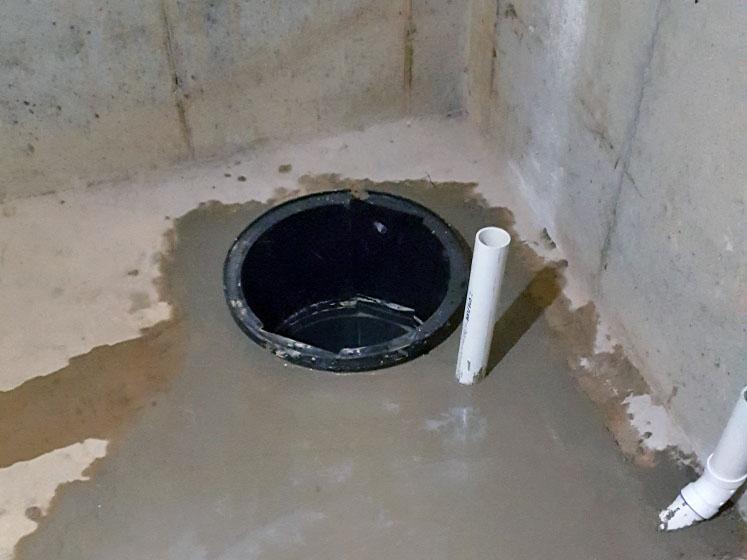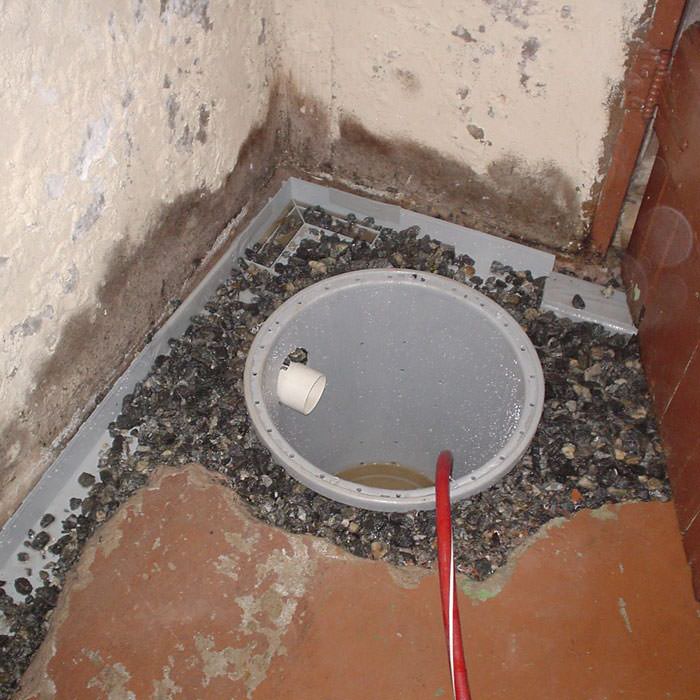How do you feel on the subject of Cleaning & Maintenance Tips for Your Home's Sump Pump?

Sump pumps are essential elements in several homes, especially in areas vulnerable to flooding or excessive moisture. They aid prevent water damages by efficiently eliminating excess water from cellars or crawl spaces. Nevertheless, like any other home appliance, sump pumps need routine upkeep to ensure they work effectively when needed one of the most. Cleansing your sump pump is an important part of its maintenance, and recognizing how to do it correctly can conserve you from pricey fixings and potential disasters.
Introduction
Maintaining a clean sump pump is important for its proper functioning and longevity. Neglecting this vital task can result in clogs, breakdowns, and inevitably, water damages to your residential or commercial property. Therefore, learning just how to clean up a sump pump is critical for house owners who rely on these gadgets to maintain their basements completely dry and secured.
Signs of a Dirty Sump Pump
Recognizing when your sump pump needs cleansing is important for preventing prospective malfunctions. Some typical indicators that indicate a filthy sump pump consist of weird noises during operation, lowered water circulation, and noticeable particles in the pit. If you notice any one of these symptoms, it's important to clean your sump pump quickly to prevent any further concerns.
Getting ready for Cleaning
Prior to you begin cleaning your sump pump, it's essential to take some safety and security precautions. Start by shutting off the power to the pump to stay clear of any electrical mishaps. Furthermore, use ideal safety gear, such as gloves and goggles, to protect yourself from dust, particles, and possible virus.
Recognizing the Sump Pump
Before diving into the cleansing process, it's essential to have a standard understanding of exactly how a sump pump functions. Commonly set up in a pit or container below the cellar floor, a sump pump contains a number of vital elements, consisting of a pump, a float switch, and a discharge pipe. When water gathers in the pit, the float switch triggers the pump, which after that pumps the water out through the discharge pipe, far from the building's foundation.
Detailed Overview to Cleaning a Sump Pump
Shutting Off the Power
Begin by detaching the power supply to the sump pump to stop any kind of accidents while cleaning.
Looking For Correct Functioning
Before reinstalling the pump, perform a quick test to ensure that the float switch triggers the pump properly. Pour some water right into the sump pit and observe the pump's operation. If every little thing is operating properly, you can rebuild the pump and reconnect the power supply.
Removing Debris and Dirt
Utilize a pail or an inside story to remove any kind of visible debris, dust, or debris from the sump pit. Dispose of the debris correctly to prevent it from clogging the pump or the discharge pipe.
Cleaning the Pump and Float Switch
When the pit is free from debris, very carefully remove the pump from the pit. Examine the pump and the float switch for any kind of indications of damages or wear. Use a soft brush or cloth to clean the surfaces and eliminate any kind of built up crud.
Flushing the System
After cleaning up the pump and float switch, purge the sump pit with clean water to get rid of any type of remaining dust or sediment. This will certainly assist ensure that the pump runs smoothly and effectively.
Upkeep Tips to Keep Your Sump Pump Clean
Along with periodic cleansing, there are several maintenance pointers you can follow to maintain your sump pump in optimum problem:
- Routine Assessment: Check your sump pump frequently for any indicators of wear, damages, or clogs.
- Maintaining the Surrounding Area Clean: Make Certain that the location around the sump pit is devoid of particles, dust, and blockages.
- Testing the Pump Regularly: Check your sump pump occasionally by pouring water right into the pit and observing its operation. This will help you recognize any type of prospective issues prior to they rise.
Verdict
Cleaning your sump pump is an important element of its upkeep and ensures that it runs efficiently when you need it the most. By adhering to the steps detailed in this guide and integrating normal maintenance right into your routine, you can expand the life-span of your sump pump and secure your home from water damage.
6 STEPS ON HOW TO CLEAN A SUMP PUMP PROPERLY
UNDERSTANDING SUMP PUMPS
Your sump pump plays a crucial role in protecting your home by managing and removing excess water. It primarily functions as a “shield”, guarding your basement against the damaging effects of water accumulation. The pump is housed in a sump pit in the lowest part of your basement, and its job is to pump out any water that collects there.
During heavy rainfalls or when snow melts rapidly, water can infiltrate your basement, posing potential risks like flooding, structural damage, and harmful mold growth. Here, the sump pump springs into action, pumping out the intruding water and directing it away from your home.
SAFETY FIRST
Before cleaning, remember to prioritize safety. Disconnect the sump pump from the power source to prevent any accidental electric shocks. Also, wear sturdy gloves to protect your hands from any sharp or dirty components within the pump.
REMOVE THE SUMP PUMP
After ensuring your safety, the next step is to remove the sump pump from its pit. Doing this might require careful maneuvering as you don’t want to damage any pump components. Once removed, clean the sump pit to remove any accumulated debris or sludge.
INSPECT THE PUMP
Inspect the pump for any visible signs of wear or damage. Check the power cord, float switch, and impeller housing. If any components look worn out or damaged, consider replacing them to ensure optimal performance.
CLEAN THE PUMP
Thoroughly clean the pump with warm, soapy water. Make sure to rid it of any dirt, gravel, or other debris that might impede its performance. You can use a toothbrush to clean the small, hard-to-reach parts of the pump.
REINSTALL THE SUMP PUMP
- Reinstall the pump into the sump pit
- Make sure it’s positioned correctly to remove the water effectively
- Once it’s back in place, reconnect it to the power source
TEST THE PUMP
Finally, pour some water into the pit to ensure the pump works correctly. It should start automatically and begin pumping out the water; if it doesn’t, check the power source and the positioning of the pump.
Remember, while cleaning your sump pump is an essential part of home maintenance, hiring a professional plumber for a thorough inspection and cleaning at least once a year is also important. This will ensure that your pump is in optimal condition, ready to protect your home from potential water damage.
BEST PRACTICES FOR CLEANING SUMP PUMP DISCHARGE PIPES
- Regular Inspection: Regularly inspect your discharge pipes, especially during heavy rainfall or snowmelt periods. Look for any signs of blockage or damage. Early detection of problems can prevent serious issues down the line.
- Periodic Cleaning: Over time, sediment and debris can accumulate in the discharge pipes, impeding the flow of water. Regular cleaning helps keep the pipes clear and functioning efficiently. You can use a high-pressure water jet to effectively clean the pipes.
- Insulation During Winter: In colder climates, discharge pipes can freeze, blocking the outflow of water. Protect your discharge pipes from freezing temperatures by insulating them with foam pipe insulation. This will ensure the sump pump can continue to discharge water even in freezing conditions.
- Proper Positioning: The discharge pipe should be positioned to direct water away from your home’s foundation. Improper positioning can lead to water seeping back into the basement. Ensure the pipe is long enough and angled correctly.
- Installation of a Check Valve: A check valve prevents water from flowing back into your sump pit after the pump has pushed it out. Installing a check valve helps maintain the efficiency of your sump pump and reduces the risk of flooding.
- Minimize Pipe Turns: Every curve or turn in the discharge pipe can decrease the efficiency of water flow. By minimizing turns and bends in your discharge pipe, you can increase the efficiency of your sump pump.
https://www.fullspeedplumbing.com/how-to-clean-a-sump-pump-properly9999/

I ran across that write up about Keep Your Sump Pump Clean, It'll Keep You Dry when looking around the web. Enjoyed reading our blog posting? Please quickly share it. Help others find it. We take joy in reading our article about Keep Your Sump Pump Clean, It'll Keep You Dry.
Call Today
Comments on “Top Techniques for Taking Care of a Sump Pump”